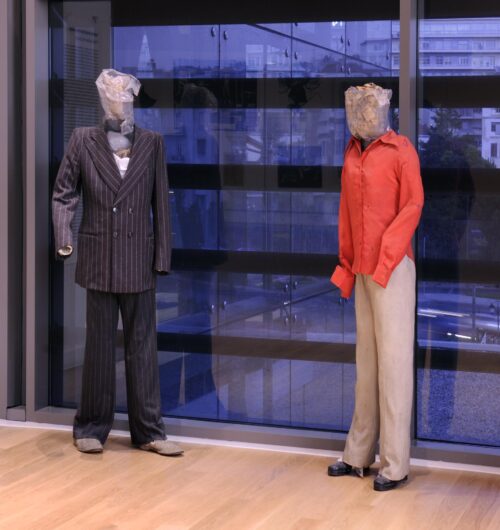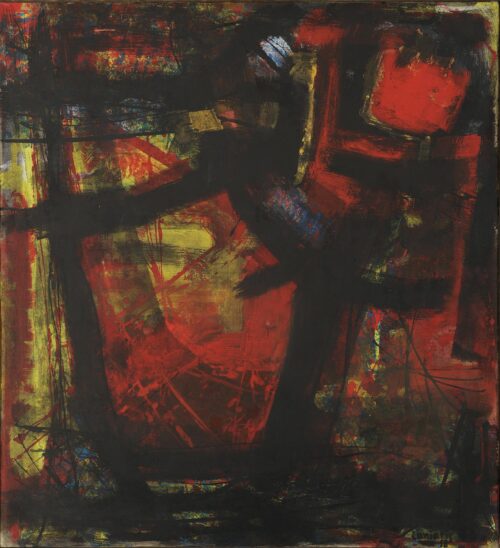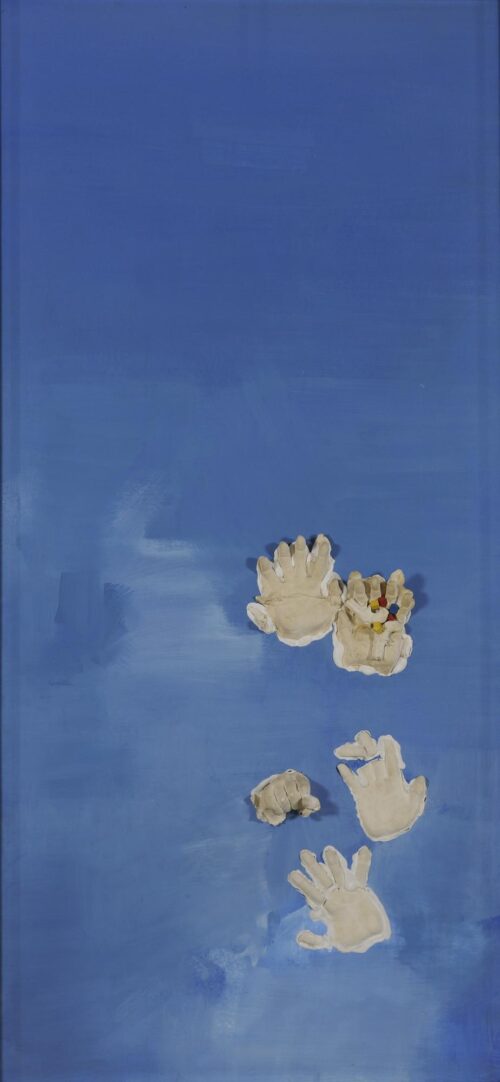
Caniaris Vlassis (1928 - 2011)
Couple Courbet
Having studied for five years at the Medical School of the University of Athens (1946-1950), he quit his studies and turned to the School of Fine Arts. After preliminary work at the Panos Sarafianos studio, he studied at the School (1950-1955) under Umvertos Argyros, Yannis Pappas and Yannis Moralis. At the same time he worked as an assistant to Yannis Tsarouchis on his various commissions for stage designs, making some of the sets himself.
From 1956 to 1960 he lived in Rome and then, till 1967, in Paris. He returned to Greece but political conditions forced him back to Paris in 1969. His work on Emigrants, a milestone in his career, led him to Berlin where he worked for nearly two years on a scholarship from D.A.A.D. (1973- 1975). In 1976 he settled permanently in Greece, in 1975 having been elected Professor to the Seat of Painting of the Architectural School of the National Technical University, where he taught until 1996. In 1981 and 1989 he was invited to teach at the Sommerakademie of Salzburg.
He began to exhibit in 1958, presenting his first solo show at the Zygos gallery, which was the first solo exhibition of abstract art in Greece. Many solo exhibitions followed, both inside and outside Greece, among which were the retrospectives at the Moderna Museet in Stockholm in 1972, the Karl Ernst Osthaus Museum in Hagen in 1991, the Staatliche Kunsthalle in Berlin in 1992 and the National Gallery of Greece in 1999. At the same time he presented his work at Panhellenies, group and international exhibitions, such as the Documenta of Kassel in 1977, the Europalia at Brussels in 1982 and the Venice Biennale in 1988.
One of the most illustrious representatives of the “Sixties Generation”, Vlassis Caniaris has focused his interest on an inquiry into the role of art in relationship to life. Drawing his inspiration from social and political conditions and abandoning traditional painting on a canvas practically from the start, he has based his work on the doctrines of new realism, arte povera and the art of the object and using his own personal style has created constructions of real materials, setting up “spaces” with puppets and objects and has thus produced environments, presenting his speculations in entities such as Walls, using plaster, barbed wire and carnations, “Gastarbeiter-Fremdarbeiter”, “Helas-Hellas”, and “North-South”. Since 1981 he has also been experimenting with a white role of paper through which he gives form to the concept of the Eventual Painting.

Couple Courbet

Disaster in Marcinelle, 1958

Landscape, ca. 1970

We use cookies to make our site work properly, to personalize content and ads, to provide social media features and to analyze our traffic. We also share information about how you use our site with our social media, advertising and analytics partners. Read the Cookies Policy.
These cookies are necessary for the website to function and cannot be switched off in our systems. They are usually only set in response to actions made by you which amount to a request for services, such as setting your privacy preferences, logging in or filling in forms. You can set your browser to block or alert you about these cookies, but some parts of the site will not then work. These cookies do not store any personally identifiable information.
If you disable this cookie, we will not be able to save your preferences. This means that every time you visit this website you will need to enable or disable cookies again.
These cookies tell us about how you use the site and they help us to make it better. For example these cookies count the number of visitors to our website and see how visitors move around when they are using it. This helps us to improve the way our site works, for example, by ensuring that users find what they are looking for easily. Our website uses Google Analytics for statistics reporting.
Please enable Strictly Necessary Cookies first so that we can save your preferences!